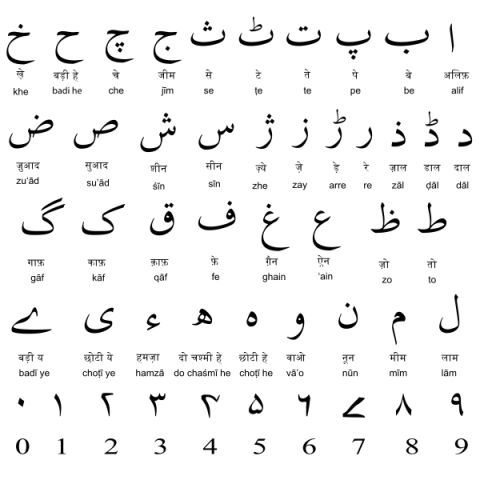Exploring the Hindi – Urdu controversy
Hana, Hannah and Amiya (Year 8) found out interesting facts about Hindi and Urdu and researched debates around the recognition of both languages in India.
Hindi
Hindi, or more precisely Modern Standard Hindi, is an Indo-Aryan language spoken mainly in India. Hindi has been described as a standardised and Sanskritised register of the Hindustani language, which itself is based primarily on the Khariboli dialect of Delhi and neighbouring areas of Northern India.


Urdu and Arabic
Arabic is one of the most used languages in the world. Arabic is said to be the origin of Urdu but the main difference between Urdu and Arabic is their language families; Urdu belongs to the Indo-European language family whereas Arabic belongs to the Afro-Asiatic language family.
They are both used in the Islamic religion – from reading the Qur’an to just chatting to friends and family.
Hindi – Urdu Controversy
The Hindi–Urdu controversy began in 19th century India out of the debate over whether the Hindi or Urdu should be chosen as the national language.
Hindi and Urdu are extremely similar spoken languages, sometimes to the extent that they are thought to be dialects or are referred to as Hindi-Urdu or Hindustani. However, they are written in very different scripts.
Urdu, in terms of history and origin is older than Hindi. But the language is spoken by many Asians worldwide, whether called Hindi or Urdu. When it was first standardised, it was called Urdu. When it was Sanskritized, it was changed to Hindi.
Standard Hindi features words from Sanskrit. Urdu is a descendant of Sanskrit. However, in standard Hindi, these Hindustani words are also replaced with direct Sanskrit borrowings.
In 1900, the government issued a decree granting an equal status to both Hindi and Urdu. Hindi and Urdu started to change linguistically, with Hindi relying on Sanskrit as the main source for academic vocabulary, often with a will and attempt to exclude any Persian equivalents.

Where are these languages spoken?
Urdu is spoken as a first language by approximately 70 million people and as a second language by more than 100 million people, mostly in Pakistan and India. It is the official language of Pakistan.
Hindi is the main language of many Indian states, including Uttar Pradesh, Haryana, Himachal Pradesh, and the capital Delhi in North India. It’s widely spoken and understood in many other states of India.
Astonishingly, there are around 25 Arab speaking countries that claim Arabic as an official (or co-official) language including Saudi Arabia, Algeria, Eritrea, Djibouti, Egypt, Palestine, Lebanon, Iraq, Jordan, Lebanon, Morocco, Qatar, Sudan, Syria, Tanzania, Bahrain, Tunisia.
The standard Hindi alphabet, confirmed by the Government of India, has 11 vowels and 35 consonants. But the traditional Hindi alphabet is made of 13 vowels and 33 consonants.

The Urdu alphabet, however, has 36 letters. There are also some symbols that can go above or below letters to modify their sound, such as with the first letter of the Urdu alphabet ا (alif) and آ (alif madd).

Fun Facts
- Urdu was (and is) “Hindi,” as the word literally means “language of India.” The word “Hindi” is of Arabic origin.
- The Vocabulary of Urdu is easier than that of Hindi Vocabulary, that is why Urdu is spoken by Hindi Speakers as well.
- English has borrowed a great number of words from Hindi e.g. avatar, punch, pyjamas, yoga, punch, sorbet, shampoo and jungle.
- Each letter of the Hindi alphabet has its own distinctive sound.
- Urdu is a vital and most important language if you are interested in any academic discipline that includes the study of South Asia.
- In English, we read from left to right, but in Arabic, you read right to left! Crazy, right?
The differences and similarities between the two languages
Urdu is a Central Indo Aryan language that was influenced by Mughals, Turks, Arabic, Persian as well as the local Hindi language. It was the establishment of Delhi Sultanate in the 16th century. However, if one listens to Urdu, it is almost identical to Hindi in phonetics and grammar. In fact, in places where there are both Hindi and Urdu speakers, like Lucknow or even Delhi, it is hard to tell the differences as both have intermingled and given way to an entirely different spoken language better known as Hindustani, or Hindi-Urdu. If we add up speakers of Urdu, Hindi, and Hindustani, we get a number that is fourth highest in terms of languages in the world.
There are, however, differences between the languages. Urdu uses a Nastaliq; اردو script, while Hindi uses Devanagari script; हिंदी. Moreover, Hindi is written from left to right, whereas Urdu is written right to left. However, as far as spoken languages are concerned, it is hard to differentiate between modern Hindi and Urdu as both contain a lot of words from each other’s vocabulary.
Because of communal tensions and an attempt to assert their supremacy, speakers of Urdu and Hindi claim these languages to be totally different. Although, it is a fact that the two languages have a shared history and influences.
The similarities are that Hindi and Urdu, share the same origin and they both have the same sentence structure. Both languages are quite understandable to speakers of both sides. In addition, there are some words that are the same in both Urdu and Hindi.

